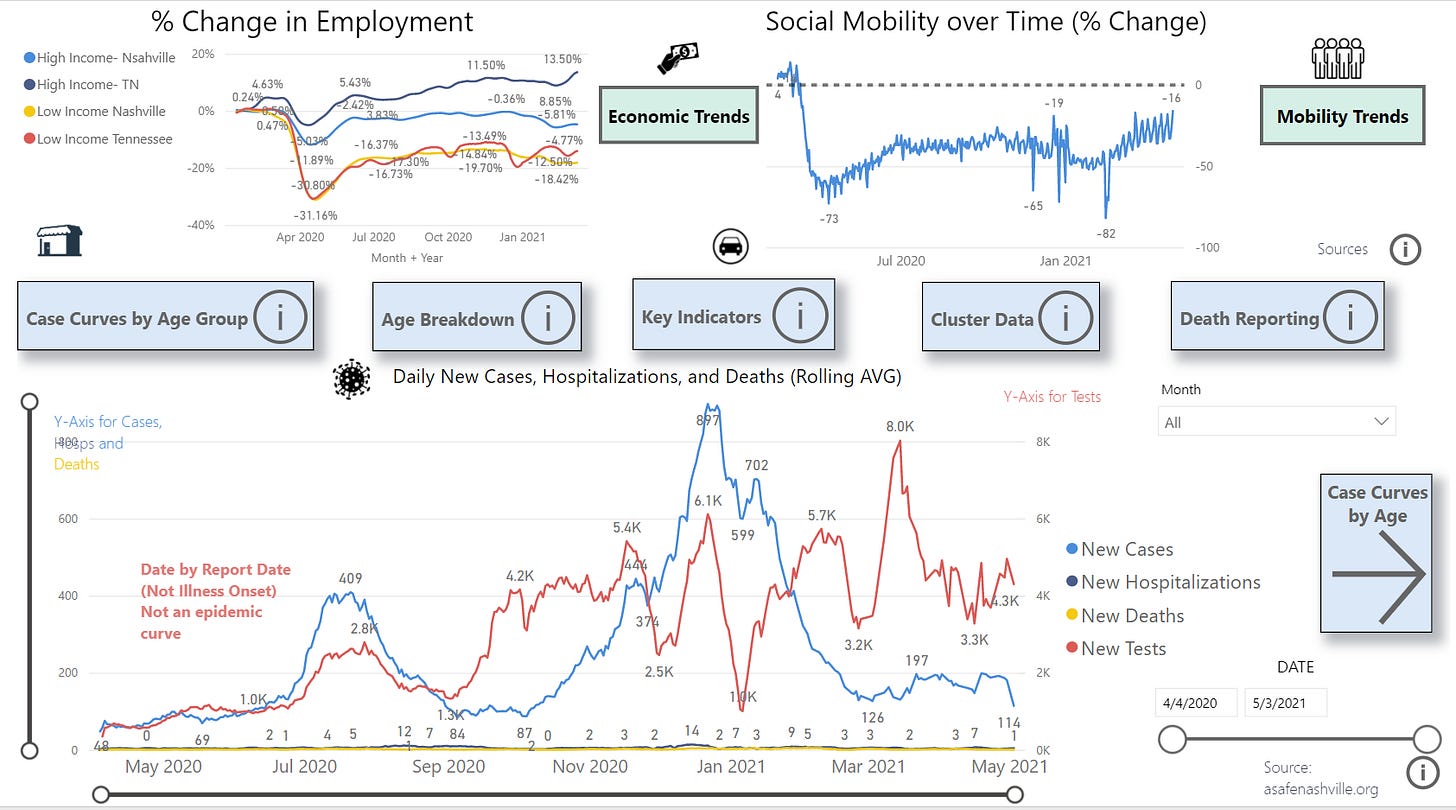I remember looking at the Johns Hopkins University “Red Bubble” dashboard in March of 2020 almost every day. I remember because I remember the feeling it invoked in me. Quite frankly, it was terrifying. I was obsessive about checking the latest numbers from mid-March till about mid-April, when I started to ask more questions and look deeper. The feeling of uncertainty- what will happen if I get sick? Will these shutdown’s cost me my job? What are my chances of 1) getting infected, and 2) the outcome if I do? After the inevitability of the pandemic settled into my mind, eventually, I started asking- How does this compare to other risks? What are the associated risks and costs of the inevitable secondary follow on effects of the ongoing NPI’s being implemented in where I live, or around the country?
I’m sure these were all common concerns early on for most people. However, when I went to these dashboards- they only reinforced uncertainty and emphasized one reality: this was an unstoppable force and it was growing. Looking at all the red bubbles did not bring me a sense of understanding, but a sense of powerlessness that led to a feeling of doom. When I was finally able to come out of it- it was because I started diving into the data myself, pulling raw data, doing comparisons and trying to get a grasp of how to weigh the risks of competing interests in my own personal life.
There’s a term for the phenomena that occurred with the proliferation of Covid Case Dashboards that became ubiquitous early on in the pandemic: Availability cascade.1 Itamar Shatz, a PhD candidate at Cambridge University, describes availability cascades this way:
An availability cascade is a self-reinforcing process where a certain stance gains increasing prominence in public discourse, which increases its availability to people and which therefore makes them more likely to believe it and spread it further.
For example, an availability cascade could occur in a situation where a news story triggers a wave of public discussion of a topic such as climate change, which leads to more stories and discussions on the topic, in a way that eventually culminates in a call for legislation in order to deal with the topic at hand.
Essentially, since people are more likely to believe information that is readily available to them, as a certain stance becomes widely discussed people become more likely to accept it and spread it to others, which in turn makes it even more available, thus leading to a large-scale, self-perpetuating cycle that shapes public opinion.
Keep reading with a 7-day free trial
Subscribe to Relevant Data to keep reading this post and get 7 days of free access to the full post archives.




